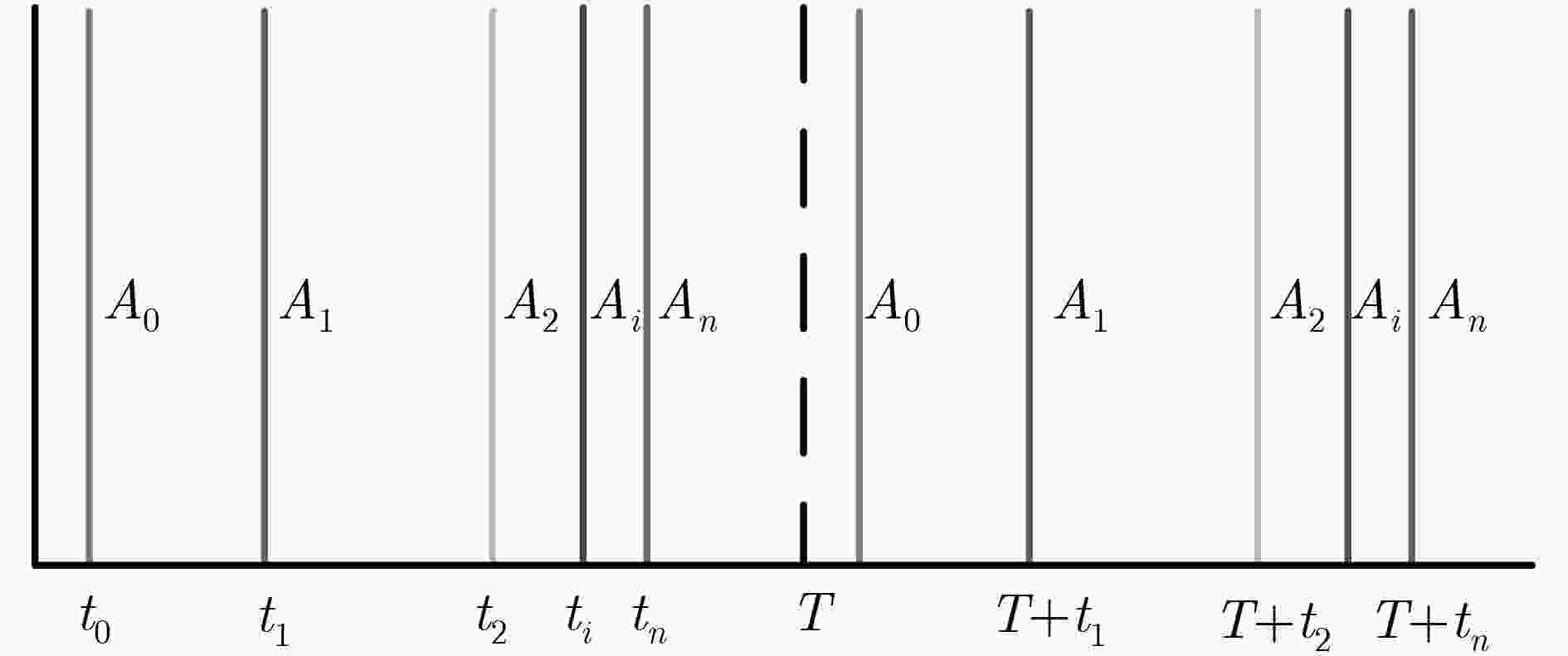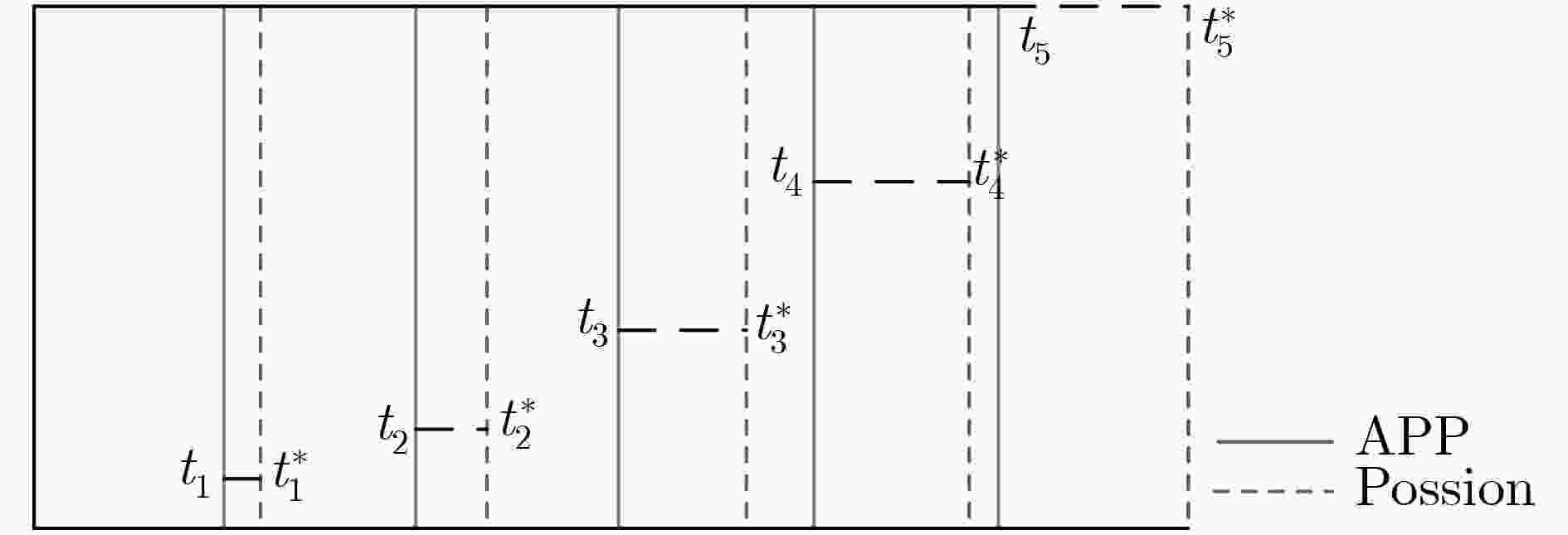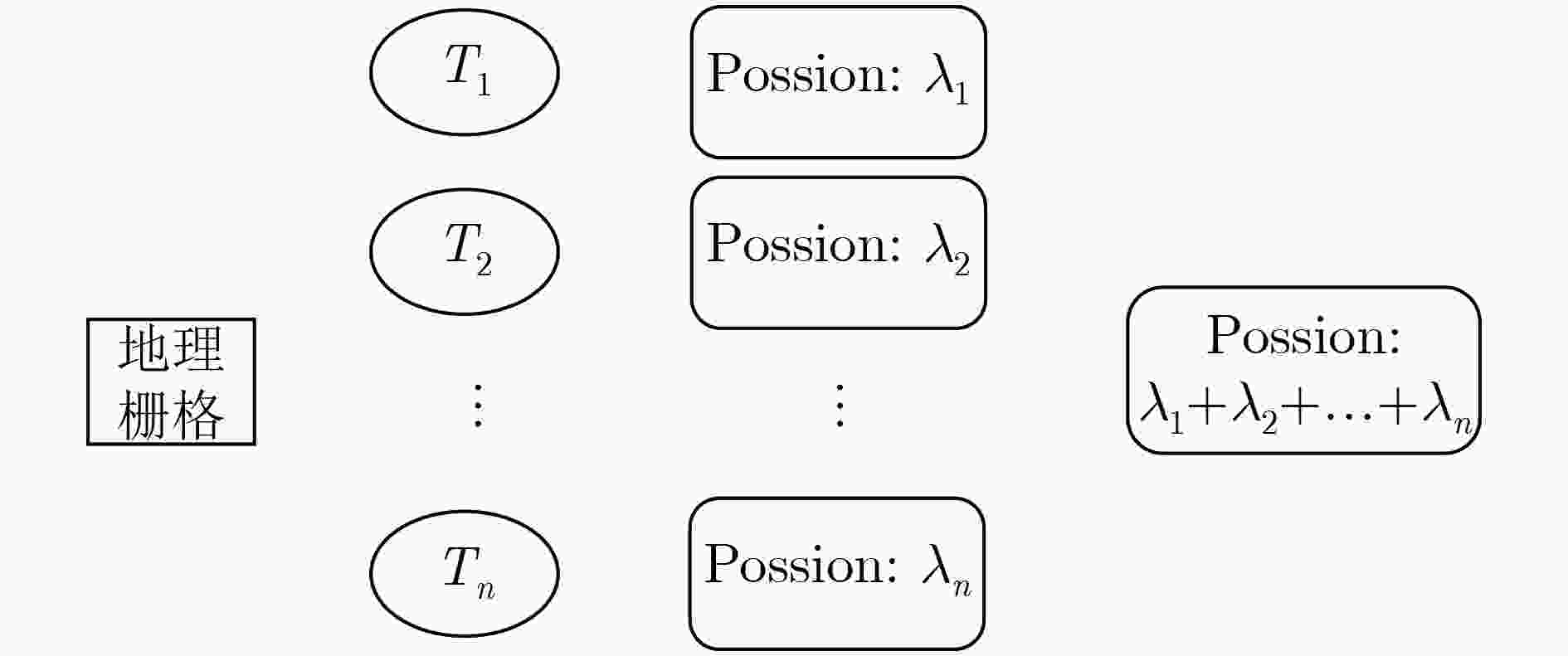Traffic Modeling for Low Earth Orbit Satellite Constellation Internet of Things
-
摘要: 随着物联网(IoT)规模的不断发展,其业务需求呈现出多样化、全球化的趋势。针对地面物联网无法覆盖全球的缺点,卫星物联网尤其是低轨卫星星座(LEOSC)物联网可以有效地为地面物联网提供覆盖性能上的补充和延伸。由于低轨卫星星座物联网系统广覆盖、高动态的特点,其业务量统计特性需要考虑到环境因素造成的影响,这导致其业务量分布与地面物联网存在显著差异。从合理高效利用星上有限资源角度出发,该文研究基于低轨卫星星座的全球物联网业务模型。结合多样化的业务特点以及卫星通信系统特性,采用统计建模理论,得出了全球物联网业务模型框架。并且初步提出了一种基于最高优先级的接入策略,以供设备节点实时选择接入的卫星。仿真结果表明:泊松过程可以用于近似模拟低轨卫星物联网中大量存在的异步流量的叠加过程;由于低轨卫星具有高动态性,其业务源高速变化,导致了卫星业务忙闲不均,峰均比(PAR)较高。Abstract: With the continuous development of the Internet of Things(IoT), its business demands show a trend of diversification and globalization. As the ground Internet of Things can not cover the whole world, the satellite IoT, especially the Low Earth Orbit Satellite Constellation (LEOSC) IoT, can supplement and extend the ground network. Due to the wide coverage and high dynamic characteristics of the LEOSC IoT system, there are significant differences between it and the ground IoT in terms of traffic statistics. In order to make reasonable and efficient use of limited resources on board, the traffic model of global Internet of Things based on LEOSC is studied in this paper. Combined with diversified traffic characteristics and satellite communication system characteristics, the framework of global IoT traffic model is obtained by using statistical modeling theory. What’s more, an access strategy based on the highest priority is proposed to enable the device node to select the satellite in real time. The simulation results show that the Poisson process can be used to simulate approximately the superposition process of asynchronous traffic commonly exist in LEOSC IoT, and due to the high dynamic nature of low earth orbit satellite, its traffic source changes at high speed, resulting in high Peak-to-Average Ratio(PAR) of traffic.
-
表 1 典型参数采集类物联网业务的主要模型参数
参数指标 参数值 激活频率或事件触发 静止参数特性 位置或移动特性 视频应用特性 单次数据量(Byte) 10~50 10~50 流 平均带宽需求(bit/s) 600 600 128 移动速度(km/h) 无 0~20 无 位置精度 无 m级 无 QoS 中 高 高 通信连续性 否 否 是 忙时时段(h) 0~24 0~24 0~24 表 2 低轨卫星星座物联网的潜在应用及其特性
地理环境 潜在业务种类 业务强度 设备部署密度 海 水文监测 低 非常低 岛 周边水文监测 较低 较低 岛上环境监测 较低 山 山体滑坡灾害监测 较高 中等 高原 地下水监测 中 高 地震灾害医疗物资运转 中 平原 战场感应 低 非常低 高效运转的物资体系 低 盆地 应急指挥 中 中等 沙漠 植被监测系统 低 较低 沙漠环境监测 较低 冰盖 边缘区域浮冰自动提取 低 低 关键区域航空探测 低 丘陵 土壤墒情监测 较低 较低 水资源监测 较低 草原 畜禽的生产及管理过程 较高 高 输电管理系统 中 裂谷 地裂运动监测 高 低 表 3 仿真参数
仿真参数 取值 卫星星座 walker星座 卫星总数 56 卫星轨道面数 9 轨道高度 1000 km 轨道倾角 90° 采样时间间隔 30 s 采样时间长度 24 h 地球平均半径 6371 km 地球表面区域 经度-180°~180°,纬度-70°~70° 栅格划分精度 经度2°,纬度2.5° 表 4 单星业务量的统计量(负载数量(个))
最大值 最小值 平均值 标准方差 异步同周期业务量的叠加 230600 0 31750 37600 泊松近似 229800 0 31760 37660 -
席博, 洪涛, 张更新. 卫星物联网场景下基于节点选择的协作波束成形技术研究[J]. 电子与信息学报, 2020, 42(12): 2882–2890. doi: 10.11999/JEIT190707XI Bo, HONG Tao, and ZHANG Gengxin. Research on the collaborative beamforming technique based on the node selection for satellite internet of things[J]. Journal of Electronics &Information Technology, 2020, 42(12): 2882–2890. doi: 10.11999/JEIT190707 钱志鸿, 王义君. 面向物联网的无线传感器网络综述[J]. 电子与信息学报, 2013, 35(1): 215–227. doi: 10.3724/SP.J.1146.2012.00876QIAN Zhihong and WANG Yijun. Internet of things-oriented wireless sensor networks review[J]. Journal of Electronics &Information Technology, 2013, 35(1): 215–227. doi: 10.3724/SP.J.1146.2012.00876 张更新, 揭晓, 曲至诚. 低轨卫星物联网的发展现状及面临的挑战[J]. 物联网学报, 2017, 1(3): 6–9.ZHANG Gengxin, JIE Xiao, and QU Zhicheng. Development status and challenges of LEO IoT[J]. Chinese Journal on Internet of Things, 2017, 1(3): 6–9. SANCTIS M D, CIANCA E, ARANITI G, et al. Satellite communications supporting internet of remote things[J]. IEEE Internet of Things Journal, 2016, 3(1): 113–123. doi: 10.1109/JIOT.2015.2487046 QU Zhicheng, ZHANG Gengxin, HONG Tao, et al. Architecture and network model of time-space uninterrupted space information network[J]. IEEE Access, 2019, 7: 27677–27688. doi: 10.1109/ACCESS.2019.2902134 芮兰兰, 孟洛明, 邱雪松. 终端业务上下文的定义方法及业务模型[J]. 电子与信息学报, 2010, 32(3): 660–665. doi: 10.3724/SP.J.1146.2009.00181RUI Lanlan, MENG Luoming, and QIU Xuesong. Terminal service context definition method and service model[J]. Journal of Electronics &Information Technology, 2010, 32(3): 660–665. doi: 10.3724/SP.J.1146.2009.00181 METZGER F, HOßFELD T, BAUER A, et al. Modeling of aggregated IoT traffic and its application to an IoT cloud[J]. Proceedings of the IEEE, 2019, 107(4): 679–694. doi: 10.1109/JPROC.2019.2901578 沈俊, 高卫斌, 张更新. 低轨卫星物联网的发展背景、业务特点和技术挑战[J]. 电信科学, 2019, 35(5): 2019089.SHEN Jun, GAO Weibin, and ZHANG Gengxin. Developing background, service characteristics and challenges of LEO IoT[J]. Telecommunications Science, 2019, 35(5): 2019089. 王海陶, 宋小明, 卢纪宇. 物联网业务特征及业务模型研究[J]. 广西通信技术, 2012(3): 43–49. doi: 10.3969/j.issn.1008-3545.2012.03.011WANG Haitao, SONG Xiaoming, and LU Jiyu. The research on characteristics and service model of internet of things[J]. Guangxi Communication Technology, 2012(3): 43–49. doi: 10.3969/j.issn.1008-3545.2012.03.011 MARTINEZ B, MONTÓN M, VILAJOSANA I, et al. The power of models: Modeling power consumption for IoT devices[J]. IEEE Sensors Journal, 2015, 15(10): 5777–5789. doi: 10.1109/JSEN.2015.2445094 BACCO M, BOERO L, CASSARA P, et al. IoT applications and services in space information networks[J]. IEEE Wireless Communications, 2019, 26(2): 31–37. doi: 10.1109/MWC.2019.1800297 张颖, 高灵君. 基于格拉布斯准则和改进粒子滤波算法的水下传感网目标跟踪[J]. 电子与信息学报, 2019, 41(10): 2294–2301. doi: 10.11999/JEIT190079ZHANG Ying and GAO Lingjun. Target tracking with underwater sensor networks based on Grubbs criterion and improved particle filter algorithm[J]. Journal of Electronics &Information Technology, 2019, 41(10): 2294–2301. doi: 10.11999/JEIT190079 付娜. 广义泊松过程及其叠加过程研究[D]. [硕士论文], 重庆师范大学, 2012.FU Na. Study of generalized Poisson process and its sum[D]. [Master dissertation], Chongqing Normal University, 2012. KEMP F. An introduction to geometrical probability: Distributional aspects with applications by A. M. Mathai[J]. Journal of the Royal Statistical Society Series D (The Statistician) , 2001, 50(2): 225–226. 王艳红, 李蕊, 张文娟. 任务到达时间服从泊松分布的随机排序[J]. 西安工业大学学报, 2016, 36(1): 5–7. doi: 10.16185/j.jxatu.edu.cn.2016.01.002WANG Yanhong, LI Rui, and ZHANG Wenjuan. Stochastic scheduling problems of releases times obeying Poisson distribution[J]. Journal of Xi’an Technological University, 2016, 36(1): 5–7. doi: 10.16185/j.jxatu.edu.cn.2016.01.002 -






 下载:
下载:






 下载:
下载:
